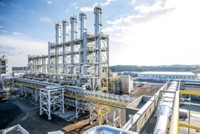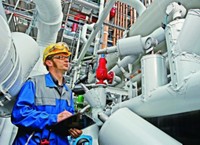Advertisement
Grab your lab coat. Let's get started
Welcome!
Welcome!
Create an account below to get 6 C&EN articles per month, receive newsletters and more - all free.
It seems this is your first time logging in online. Please enter the following information to continue.
As an ACS member you automatically get access to this site. All we need is few more details to create your reading experience.
Not you? Sign in with a different account.
Not you? Sign in with a different account.
ERROR 1
ERROR 1
ERROR 2
ERROR 2
ERROR 2
ERROR 2
ERROR 2
Password and Confirm password must match.
If you have an ACS member number, please enter it here so we can link this account to your membership. (optional)
ERROR 2
ACS values your privacy. By submitting your information, you are gaining access to C&EN and subscribing to our weekly newsletter. We use the information you provide to make your reading experience better, and we will never sell your data to third party members.
Energy
More Solar Silicon
Despite energy slump and credit crisis, Wacker expands
by Marc S. Reisch
October 27, 2008
| A version of this story appeared in
Volume 86, Issue 43

PLUMMETING OIL PRICES are making renewable energy less financially attractive at the moment, and a global credit crunch is confounding business plans. Undaunted, Wacker Chemie says it will build a nearly $1 billion plant in Germany to make hyperpure polycrystalline silicon, a major component of solar electricity cells.
Wacker will build the 10,000-metric-ton-per-year facility at its Nünchritz site in Saxony and integrate the plant with its existing silicone fluids and polymers operations there. When it reaches full capacity at the end of 2011, the polysilicon plant will employ 450 people. Wacker says it will also raise the capacity of an ongoing expansion at its Burghausen production site in Bavaria, Germany, from 7,000 to 10,000 metric tons.
As energy costs slide and cash gets harder to come by, however, prospects for solar energy companies aren't as bright as they once were. For instance, Schott Solar, a German maker of photovoltaic components, abandoned its $900 million initial public stock offering earlier this month.
Richard M. Winegarner, president of solar consultancy Sage Concepts, says the 40% annual growth rate for solar-cell production over the past few years seems hugely optimistic now. "My personal belief is that by 2012 we will see a glut of solar polysilicon on the market," he says. Even government subsidies, which have helped the solar business percolate along, could be in jeopardy because of the economic slowdown's effect on government finances, Winegarner adds.
Still, Wacker is optimistic about the long-term prospects for the solar energy market. "We expect crystalline solar technology to show continued strong growth and customer demand for polysilicon to remain high," Wacker CEO Rudolf Staudigl says.
So confident is Wacker in solar energy over the long term that it plans to have total polysilicon capacity of 35,500 metric tons by the end of 2011, up from 10,000 metric tons today. The new additions and others now under way will bring Wacker to within hailing distance of its largest competitor, Hemlock Semiconductor. A joint venture of Dow Corning, Shin-Etsu Handotai, and Mitsubishi Materials, Hemlock plans to have polysilicon capacity of 39,000 metric tons by the end of 2011 at its Hemlock, Mich., site.




Join the conversation
Contact the reporter
Submit a Letter to the Editor for publication
Engage with us on Twitter